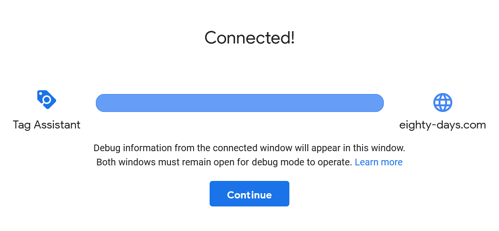Google Tag Manager - Getting Started
Digital marketers can’t do their jobs without tags – the more tags, the more hotel data. Managing the precarious balance between data insight and conversions (killed by slow site performance) is challenging to say the least - enter the stage Google Tag Manager.

In our article at the end of November, Google Analytics - best practices for hotels, we looked briefly at Google Tag Manager and how deploying it on your hotel website could help to measure traffic and optimise online marketing. If you aren’t familiar with Google Tag Manager or not using it on your website, understanding what it is, how it can be used and the benefits it will bring may help in persuading you to make changes to your current set up.
WHAT IS GOOGLE TAG MANAGER?
If you are already using Google Analytics, you have a little code snippet on your website to track visitor behaviour and optimise conversions such as accommodation bookings and wedding enquiries. Google Tag Manager (GTM) is a tool that allows you to manage and arrange these snippets (called marketing tags or tracking pixels) on your website or mobile app that can help you understand visitor behavioural patterns and trends.
Traditionally, adding or editing these tags required a developer to amend your website’s source code, but GTM allows you or your marketing team to set up or edit tags code-free. This is especially useful as you begin to use more tags, be it from your social media or email marketing platform.

SETTING UP GOOGLE TAG MANAGER
Creating a GTM account is straightforward with an existing Google account.
- Go to https://marketingplatform.google.com/about/tag-manager/ and create an account for your organisation
- After setting up a GTM account you will be asked to create a container for your domain name. This container (appropriately named) will hold all of the tags on your site and acts as an entry to your hotel website
- When you create a container, GTM generates a container code snippet. You then need to ask your developers to paste this snippet into every page of your site. This is the only time they will have to do it for you
- Add, update or publish marketing tags by yourself, without changing any more code on your website
- You can use Preview mode to check the Tag Manager configuration on your website or app to make sure everything is working as expected before you publish any changes
WHAT ARE THE BENEFITS OF USING GTM?
1. YOU CAN TAKE OWNERSHIP
It can often take a long time to update tags on your site or add new ones. If you are working with an agency or as part of a corporate team, it can sometimes be tedious waiting in a queue for a web developer to get to your request which means your digital campaigns can be delayed, missing valuable opportunities and accommodation bookings. That's where GTM comes in – you or your marketing team can update tags and set up tracking instead of waiting for a developer to edit code on your website, increasing the agility of your team to experiment with new campaigns and ideas as well as allowing you to manage them within a singular platform
2. PREVIEW MODE
The preview mode makes it easy for you to check if your new tags work exactly as you want them to, taking the guessing game out of your analytics setup

3. PAGE LOADING TIMES CAN BE FASTER
Theoretically, when tags are running from one location, your website code should be cleaner and page load times faster which translates into more conversions and higher rankings (improved SEO)
4. IT’S FREE TO USE
For independent hotels or small chains/groups it’s perfect, but there is also a premium GTM version available in Tag Manager 360 which supports large chains or groups managing multiple sites
5. YOU CAN CREATE YOUR OWN TEMPLATES
GTM allows you to export all of your tags, triggers, and variables into a single file which you can use to create your own templates of commonly used codes for when you are frequently implementing the same Google Analytics event. You can also use templates that other users have shared
Hotel digital marketers can’t do their jobs without tags – the more tags, the more hotel data. The trade-off is often more errors and slower page loading times and managing this precarious balance between data insight and conversions (killed by slow site performance) is frustrating. But a note of caution, there are occasions when GTM may not address all of your tagging challenges. It doesn’t work well on websites that implement a strict Content Security Policy, and you might still need a developer to set up more nuanced e-commerce tracking. If these are not an issue for you, GTM can drastically improve your data collection and site performance.
Categories:
Katrina has been working in the hospitality industry since 1993, more recently at Hotel Benchmark, uncovering insight from a wealth of data.


